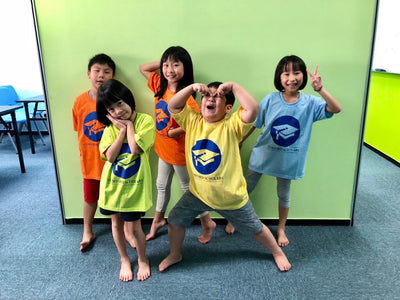Should you be concerned about myopia? Is it something to expect? Here are some misconceptions of myopia that parents should know!

Singapore is sometimes known as the "myopia capital of the world” as we are home to one of the highest prevalence of myopia globally[1]. In fact, myopia is so common in Singapore that many parents think of it as a ‘condition that their children generally develop, especially with the long hours spent studying or staring at screens.
However, unknown to many, myopia progression can lead to future sight-threatening diseases that might even lead to the loss of sight.
So, why is it important to manage our children’s myopia early, and how do we do it? We spoke with Ken Tong, President of the Singapore Optometric Association, to find out.
Isn’t myopia just ‘nearsightedness’?
Myopia is sometimes called ‘nearsightedness’, but it is actually much more than that. First, we need to understand what exactly myopia is.
Myopia is an eye disorder that causes your distance vision to be blurred compared to your near vision. It occurs when the eyeball is longer than a normal eye - this elongation of the eyeball causes light rays to focus on a point in front of the retina, rather than directly on its surface. Thus, distant objects are blurry to the eye. To illustrate this, a good example will be people who wear spectacles with very thick lenses (I am sure some of our friends fit into this category!) - as they have a very elongated eye, there is a need for thicker lenses to bend light into the retina surface in order for them to see clearly.
This elongation of the eye is irreversible, and the earlier a child becomes myopic, the higher their risk of developing high myopia which could lead to sight-threatening complications such as retinal degeneration and detachment. Myopia is a chronic and progressive disease that occurs during a child’s growing years and will affects the child’s eye health in the long run.
What causes myopia and what are the common misconceptions people have about it?
Genetics and environmental factors are the most common causes of myopia. As myopia tends to run in the family, if one of the parents is myopic, the chances of the child being myopic is doubled. If both parents are myopic, then the chances of the child getting myopia will be eight times more.
A common misconception that parents have is that it is not possible to slow down the progression of myopia, and so might perceive it as a condition that they have no control over. As a result, parents usually stop at fitting their children with spectacles to correct their vision. However, the progression of myopia can indeed be controlled with myopia management solutions.
Why is myopia so common in Singapore?
In Singapore, children tend to prefer staying indoors due to the humid weather. The lack of outdoor activities, coupled with excessive near work like reading and playing electronic devices will expose a child to the risk of developing myopia. This is especially concerning as children are spending more time indoors due to the pandemic; coupled with the implementation of home-based learning, the time that kids spend online has increased tremendously in the recent years, and this problem of myopia is only set to worsen if parents do not intervene.
What are the benefits of managing a child’s myopia early?
Young children who develop myopia before they are 12 years old are at high risk of developing high myopia, so by managing the child’s myopia as soon as it is diagnosed, measures can be taken to curb its progression. A lower risk of high myopia decreases the chances of the child developing other sight-threatening complications, such as retinal detachment and cataract.
Hence, myopia should be assessed and managed as early as possible. There is no ‘safe’ level of myopia, and it is never too early to start. I would recommend starting as early as 3 years old.
How can parents manage their children’s myopia?
Parents should take action early and manage their child’s myopia progression through solutions such as:
- Latest Special Defocus Ophthalmic Lens that are fitted on spectacles to help control myopia progression
- Orthokeratology (ortho-K): Also known as braces for the eyes, they are hard lenses worn at night when the child is sleeping to help slow down myopia progression. These hard lenses will correct the child’s vision and provide him/her with clear vision the following day.
- An example of such ortho-K lenses will be the ACUVUE® Abiliti™ Overnight Therapeutic Lenses, a therapeutic lens with the CE mark for myopia control.
By acting early and managing their children’s myopia with proven solutions, parents can safeguard their children’s eye health so they can see better tomorrow and help protect future generations from this silent epidemic.
[1] Source: SNEC Media Release








